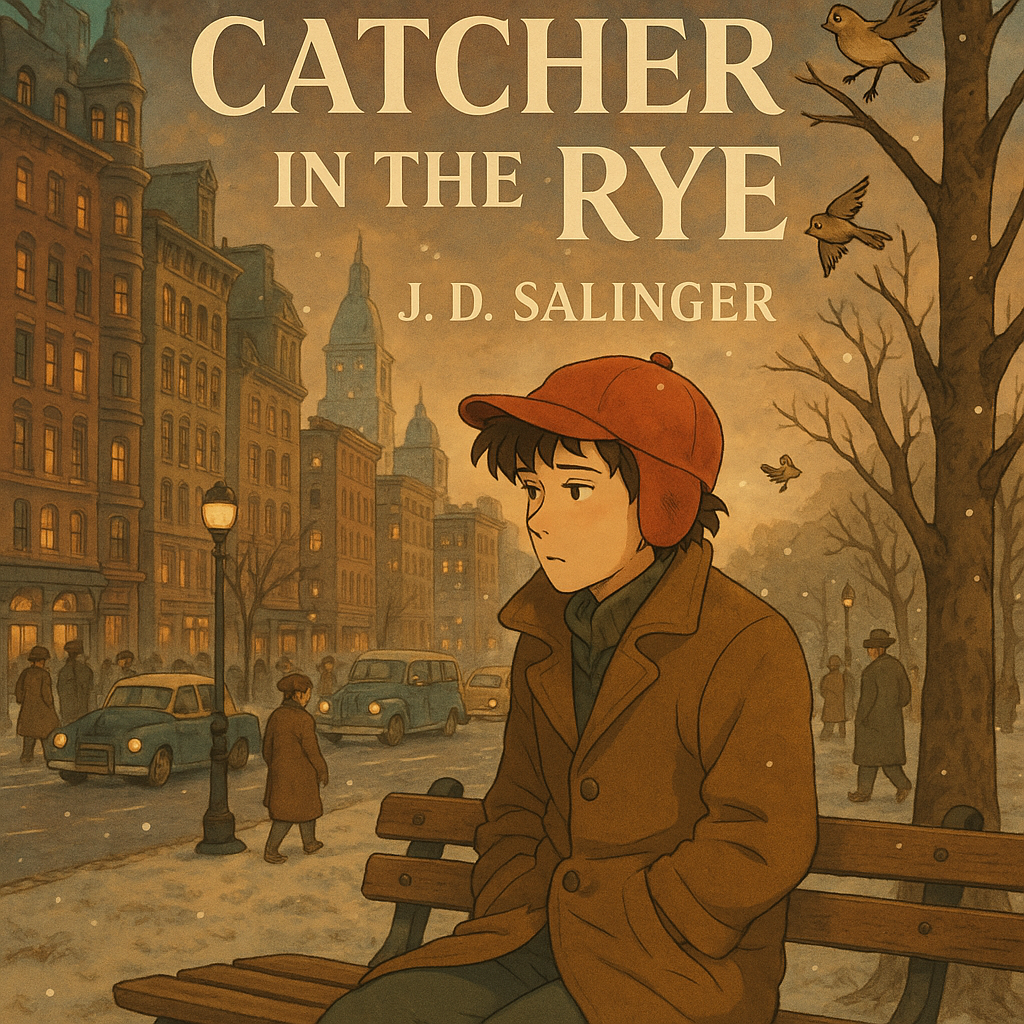
A 5-Minute Summary of The Catcher in the Rye by J.D. Salinger
“The Catcher in the Rye” by J.D. Salinger is a classic novel that delves into the complex teenage psyche through the eyes of its protagonist, Holden Caulfield. Published in 1951, the novel remains influential, capturing the tumultuous transition from adolescence to adulthood.
The story unfolds with Holden Caulfield recounting his experiences following his expulsion from Pencey Prep, a prestigious private school. Disenchanted by the perceived phoniness of the adult world, Holden grapples with feelings of alienation and loss. He decides to leave Pencey early and head to New York City, embarking on a three-day odyssey that reveals his internal struggle and search for meaning.
Holden’s journey in New York City is marked by encounters that amplify his feelings of confusion and depression. He interacts with various characters, ranging from former teachers to strangers in bars, but he often dismisses them as superficial and inauthentic. Despite his criticisms, Holden is also profoundly lonely and craves genuine connection.
Throughout the novel, Holden is preoccupied with the idea of innocence, particularly that of children. This sentiment is encapsulated in his fantasy of becoming “the catcher in the rye,” a protector of children playing in a rye field from falling over the edge of a cliff. This metaphor illustrates his desire to preserve purity and innocence, contrasting with the loss he perceives in the adult world.
Central to Holden’s inner turmoil is the traumatic death of his younger brother, Allie. Holden’s fond memories of Allie highlight his lingering grief and contribute to his idealization of childhood innocence. Holden’s inability to effectively process Allie’s death displays his struggle with emotional vulnerability and acceptance of reality.
Phoebe, Holden’s younger sister, represents the innocence he yearns to protect. Her intelligence and perceptiveness offer a glimmer of hope and understanding in Holden’s turbulent world. In a pivotal moment, when Holden shares his dream of being the catcher in the rye with Phoebe, she listens intently, emphasizing their deep sibling bond.
As Holden’s mental state deteriorates, he teeters on the edge of despair, culminating in a breakdown. It is through Phoebe’s unconditional love and concern that Holden begins to find a path toward healing. By the end of the novel, Holden communicates from a rest home, hinting at a tentative acceptance of therapy and the possibility of recovery.
“The Catcher in the Rye” explores themes of identity, belonging, and the painful journey toward adulthood. Salinger deftly depicts Holden’s internal conflict with authenticity, capturing the contradictions and turbulence inherent in teenage experience. The novel’s poignant exploration of alienation and the quest for genuine human connection resonates with readers, making it a timeless work.
Holden Caulfield’s story engages readers in a narrative that is as much about finding one’s place in the world as it is about understanding oneself. Through his candid reflections and often cynical outlook, Holden invites readers to ponder their own journeys and to consider the complexities of growing up. In a world that often feels disingenuous, Salinger’s novel reminds us of the enduring value of innocence, empathy, and the quest for authenticity.
